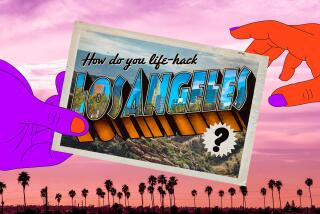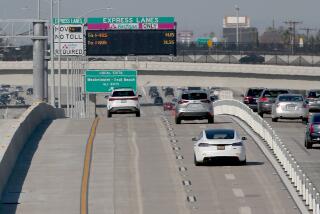Go With the Flow
- Share via
That little roadway experiment on 4th Street east of downtown is more important than you might think. The city’s first automated reversible street allows the center lane to be used by inbound traffic in the morning rush hour and by the outbound crush in the late afternoon. In other words, commuters get an extra lane when they need it most.
This is not a new concept. The traffic lanes of Highland Avenue in Hollywood, for example, are marked with orange cones every weekday afternoon for the same purpose. But on 4th Street, overhead traffic arrows and Xs (the lane is open or closed), radio reports on special traffic frequencies and informational signs are supposed to do the trick.
Reversible lanes have been used to ease traffic in many parts of the country for more than 30 years. But some express streets still require the occasional traffic cop and strategically placed orange cones. The same help seems logical here, especially in light of the fact that most Angelenos are inexperienced with reversible lanes.
So what makes this experiment important? Consider these predictions from the Southern California Assn. of Governments: Motorists with 200-minute round trips will account for 20% of all commuters by 2026, up from 5% to 10% now. The average speed of afternoon freeway commutes will drop from 33 mph to about 23 mph during the same period. Every option of traffic management has to be exploited. Reversible streets are part of the solution.
More to Read
Sign up for Essential California
The most important California stories and recommendations in your inbox every morning.
You may occasionally receive promotional content from the Los Angeles Times.










